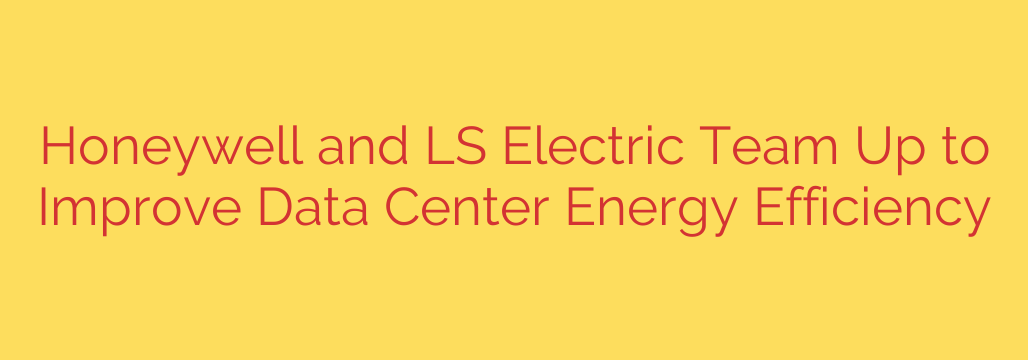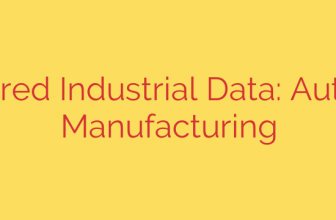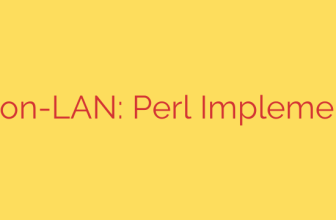
Unlocking Peak Performance: The Future of Data Center Power and Building Management
The digital world is built on a foundation of data centers, and that foundation is consuming energy at an unprecedented rate. As artificial intelligence, cloud computing, and massive data analytics become the norm, the demand for power is skyrocketing, making energy efficiency not just a goal, but a critical business imperative. Historically, the systems that power a data center have been managed separately from the systems that run the facility itself, creating a significant efficiency gap.
A groundbreaking shift is underway to solve this problem by integrating these two distinct worlds: IT power infrastructure and Operational Technology (OT). This unified approach is paving the way for a new generation of smarter, more sustainable, and highly reliable data centers.
The Growing Challenge: Data Center Energy Consumption
Data centers are among the most energy-intensive facilities on the planet, currently accounting for up to 1.5% of the world’s total electricity consumption. This figure is projected to climb sharply as the demand for processing power, driven by AI and other next-generation technologies, continues to grow.
This immense energy footprint presents a multi-faceted challenge for operators:
- Rising Operational Costs: Electricity is a primary operating expense, directly impacting profitability.
- Environmental Impact: High energy consumption contributes to a larger carbon footprint, a growing concern for stakeholders and regulators.
- Grid Strain: The sheer power required by hyperscale and co-location data centers can place a significant strain on local energy grids.
To meet these challenges head-on, operators must move beyond traditional management methods and embrace a more holistic strategy.
Breaking Down the Silos: Merging IT Power and Building Management
For years, data center management has been divided. On one side, you have the IT power infrastructure—the equipment that delivers clean, uninterrupted power to the servers. This includes switchgear, transformers, busduct systems, and power distribution units.
On the other side, you have the Operational Technology (OT) or Building Management Systems (BMS). This is the facility’s central nervous system, controlling critical environmental factors like cooling, heating, ventilation, fire suppression, and physical security.
When these systems operate in isolation, they cannot share data effectively, leading to major inefficiencies. For example, the cooling system might run at a constant high level, unaware that a bank of servers is idling and generating less heat. This lack of communication results in wasted energy, increased costs, and missed opportunities for optimization.
The Unified Solution: A New Paradigm in Efficiency
The future lies in creating a single, integrated platform that bridges the IT and OT divide. By combining advanced power distribution and management technology with sophisticated building control systems, operators can gain a complete, real-time view of their entire facility.
This integration unlocks powerful new capabilities and delivers tangible benefits:
- Enhanced Operational Efficiency: A unified system can make intelligent, automated decisions. For instance, if power monitoring shows a spike in server activity in a specific rack, the system can instantly direct more cooling to that precise location, avoiding the need to overcool the entire room.
- Significant Energy Savings: By optimizing power and cooling in tandem, data centers can dramatically reduce their overall energy consumption and lower their Power Usage Effectiveness (PUE) ratio.
- Improved Uptime and Reliability: Predictive analytics can monitor both power equipment and environmental controls for signs of potential failure. This allows maintenance teams to address issues proactively before they cause downtime, ensuring maximum operational continuity.
- Simplified Management: Instead of juggling multiple disparate systems, data center managers can use a single dashboard to monitor, control, and analyze every aspect of their facility. This simplifies operations and frees up valuable personnel.
Actionable Steps for Data Center Operators
Transitioning to an integrated management model is a strategic move that can future-proof your facility. Here are a few key steps to consider:
- Conduct a Comprehensive Audit: Begin by evaluating your current power infrastructure and building management systems. Identify where the biggest energy drains and operational silos exist.
- Prioritize Integrated Solutions: When upgrading or specifying new equipment, look for vendors and solutions that are designed for seamless integration. Open platforms and standardized communication protocols are essential.
- Leverage Automation and Analytics: Invest in software that can not only monitor but also automate responses based on real-time data from both IT and OT systems.
- Plan for Scalability: Choose a unified solution that can grow with your needs, accommodating the increasing power and cooling densities required by future technologies.
By breaking down the traditional barriers between power management and facility operations, data center operators can unlock a new level of performance. This integrated approach is no longer a luxury—it is an essential strategy for building the sustainable, reliable, and cost-effective digital infrastructure of tomorrow.
Source: https://datacenternews.asia/story/honeywell-ls-electric-partner-to-boost-data-centre-energy-use








